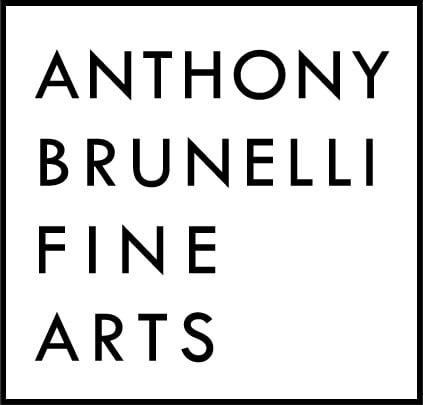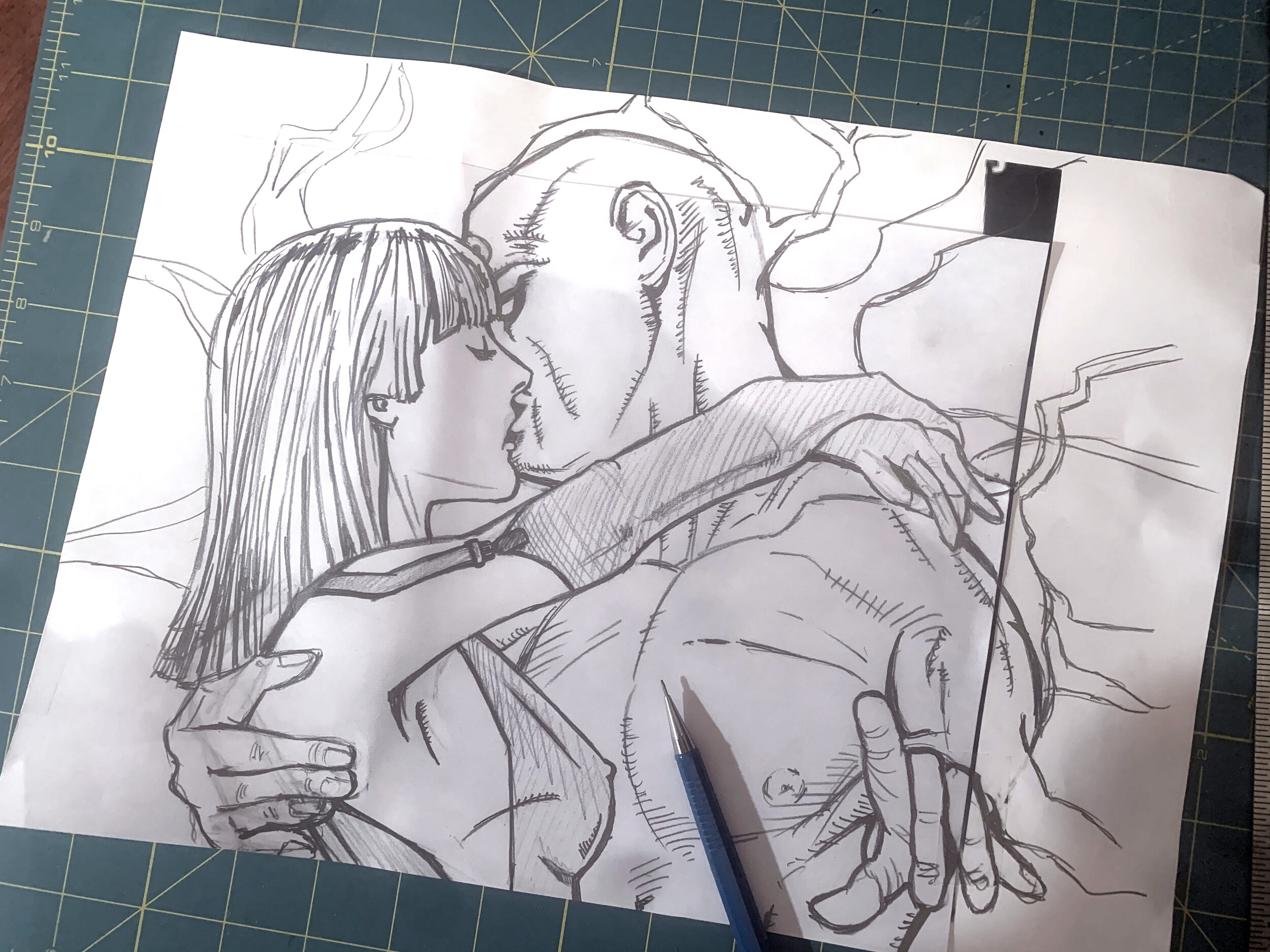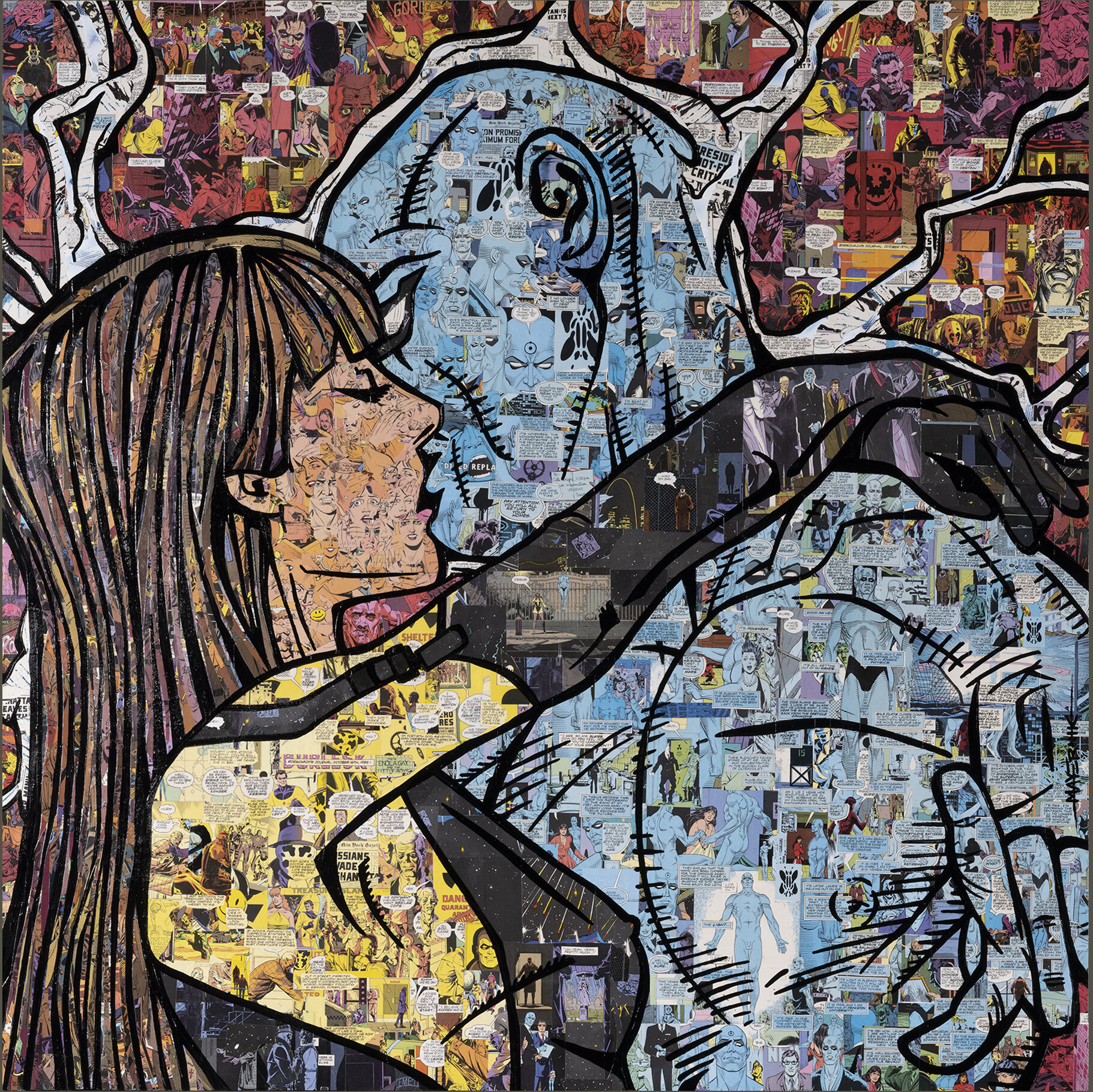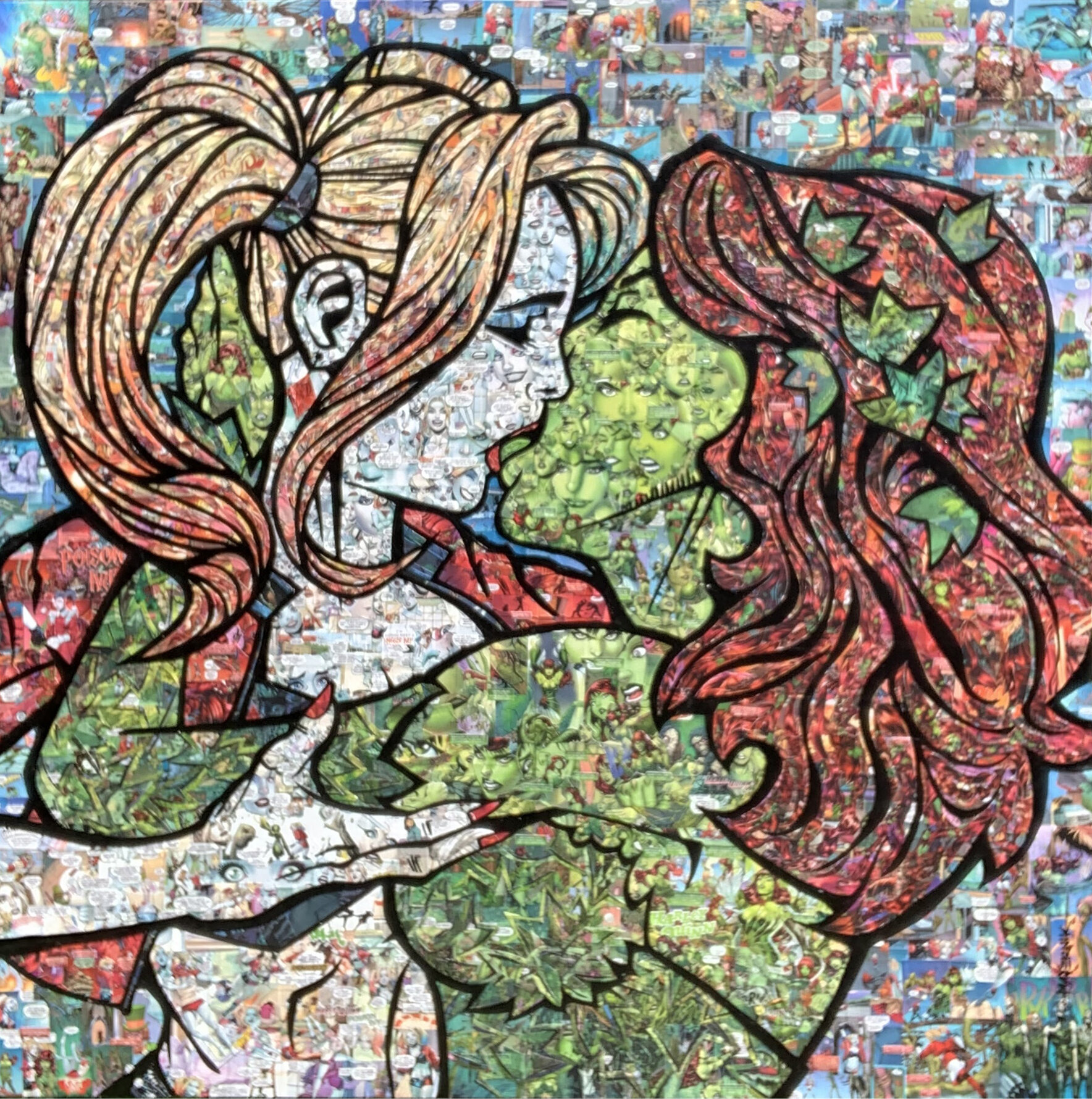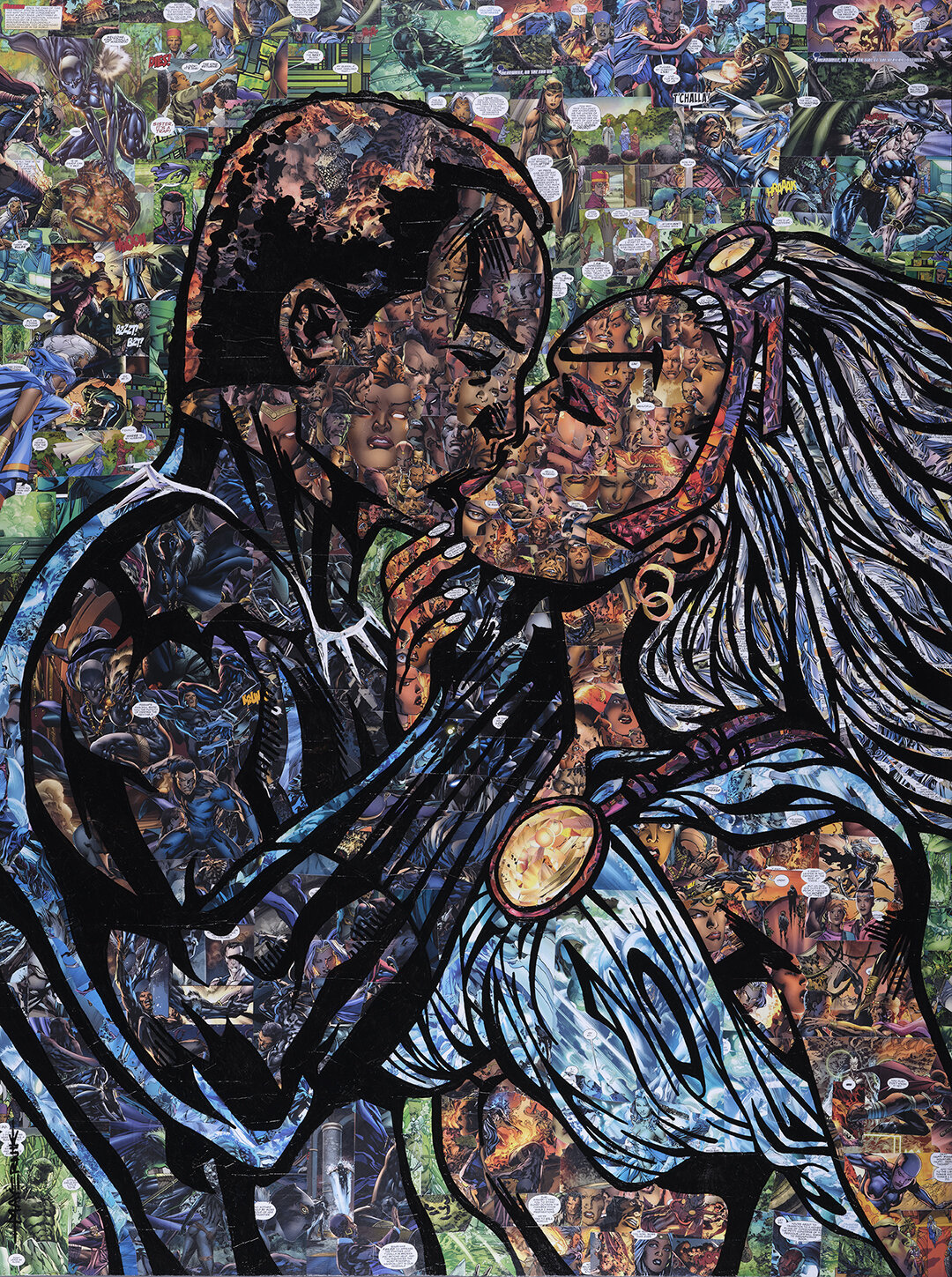In this Artist Insights Joseph Mayernik discusses his collage work and choice to give new life to comic books.
Comic books are destined to live a lonely life.
The best ones are sequestered in plastic. Stored away in cardboard boxes only to be occasionally enjoyed by the cover. Its story, illustrations, and heroes are trapped in time by a simplified villainous trap set by the comic books archenemy: The Elements. Villain’s like Lex Luthor, Poison Ivy, Kingpin, or Negan are just accomplices. Exposure to air, water, mold, and oils from hands is the true nemesis for any comic book.
My comics in my personal collection were future victims of this fate. Alone they sat in a wet, musty basement. For years I would pass by my comics that were packed away in boxes and think to myself … “I am just housing these until I have to throw them away after they get moldy, or water damaged, or thumbed through at a garage sale or destroyed by some other act of a higher power.” So, I decided one day to turn them into something else. To breathe new life into the comics so they once again can be enjoyed.
Artist Joseph Mayernik stands in front of a college in progress.
So, what is a Hero Collage? The simplest explanation is taking comic books and cutting them up into little pieces and rearranging them into something new. The long answer? Well, there is no long answer needed. The first one sums it up.
Hard stop.
Yes, I cut up vintage comic books into tiny pieces. Sacrilege? Travesty? Horrible? Quite possibly, but I would like to think it’s honoring them in ways that allow the comics to reach their fullest potential. Before I cut up the comic book, I am always reminded of the Charles Shultz Peanuts cartoon where Linus is confronted with the prospect of his precious blue blanket being cut with scissors. His response is classic, “You can’t cut up my blanket! It will bleed!” Despite comics being my medium of choice, I do know how he feels.
The Hero Collage series sets heroes free and exaggerates them. With their large size, the viewer is forced to be overwhelmed by the story. Every Hero Collage takes comics and re-imagines them into unique works of art. The focus is taking what is meant to be viewed as linear, and explode it on a flat surface to be enjoyed all at once.
Each Hero Collage I create consists of only certain comics within the book title, and I place a portion of the mastheads on the back of the canvases. There is an intentional choice to exploit certain storylines. No other random comic titles are included as filler. Each comic book resigns itself to sacrifice through selection. It is a puzzle without directions.
For example, during quarantine, I decided to cut up my original 12-issue DC Comic Watchman Comics, circa 1986 and 1987. After reviewing the comics and rereading their pages I decided to create two 36 x 36 in. works of art from the 12-issue miniseries. The first six issues would feature a kiss between Silk Spectre and Dr. Manhattan, Atomic Kiss. The last six would feature a kiss between Nite Owl and Silk Spectre, Nitetime Kiss. I enjoy every part of the process. From the first sketch to placing the comic pieces onto my homemade canvases to painting the black accents. No two processes have been alike.
I start by choosing my subject and draw what I want to portray. I then select the storyline that will best represent the work by spending many hours looking over the comic books, researching its pages, looking for colors, and isolating key portions of the story that would be important to feature. The comic storylines dictate what size the artwork will be, and what main colors will be used. Once I choose the comics I make a point to read them, and marvel at the talent of each illustrator, penciler, and storyteller that crafted this comic book that I am about to cut apart.
I enter each work with complete surrender and create from only what the comic provides. Often the artwork changes into something else as it nears completion. Take Atomic Kiss for instance. Originally, the intention was to have Dr. Manhattan’s right hand on Silk Spectre’s back as seen in the original sketch, but the action seemed too intimate as I was creating. In the story of Watchmen, Dr. Manhattan is closed off emotionally and is very distant as a side effect of a horrific accident. He is no longer able to be the partner he once was Silk Spectre. The removal of Dr. Manhattan’s hand helped to reinforce this fractured dynamic between the two heroes.
I have many Hero Collage works in private collections across the United States and I’m humbled that they have chosen to be placed above couches, baby grand pianos, in dining or exercise rooms, and not just the traditional man cave. I firmly believe that you do not have to know the heroes to identify with the visuals. The kisses have passion, intimacy, and love. The single heroes have strength, ferocity, and confidence. At its core, the Hero Collage subjects are relatable to the viewer on a human level that we all strive for.
The current project is the reinterpretation of the 25-issue crossover event, War of The Gods, circa 1991. It is the largest Hero Collage to date at 48 x 72 in. It features all the notable DC Heroes of Wonder Woman, Shazam, The Flash, and Batman to name a few. This is an evolution of my subject matter from individual heroes, to kisses, to recreating influential comic book covers, and is challenging my creative process and pushing me to grow.
The end result of every Hero Collage is a nostalgia-filled experience. Viewers explore, read, and view the story while reminiscing back to a simpler time when life’s demands were just to simply read a comic book. Even if that the comic book was safely secured in plastic, in the closet or basement, away from the light.
